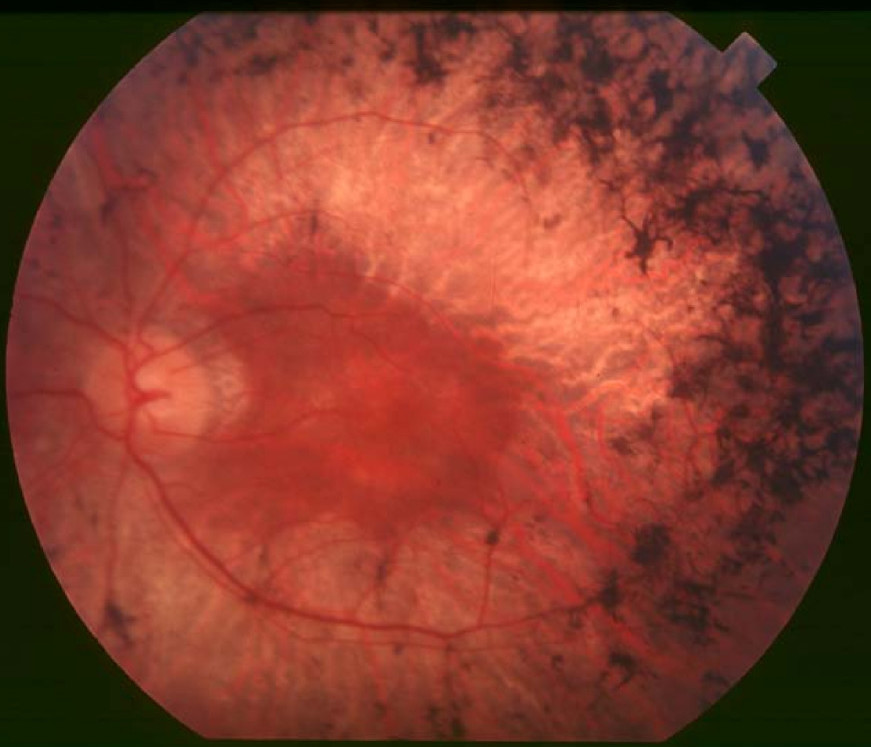Retinitis Pigmentosa 74

A number sign (#) is used with this entry because of evidence that retinitis pigmentosa-74 (RP74) is caused by homozygous or compound heterozygous mutation in the BBS2 gene (606151) on chromosome 16q13.
Clinical FeaturesShevach et al. (2015) reported a Moroccan Jewish family in which 3 sibs had nonsyndromic retinitis pigmentosa. The proband received a diagnosis of RP at age 20 years following complaints of impaired night vision and constricted visual fields. At age 32, her electroretinographic responses were undetectable. At age 49, her visual acuity was at the level of hand motions, and posterior polar cataract and posterior subcapsular opacity were evident. Fundus findings were compatible with advanced RP, including moderate pallor of the optic disc, widespread atrophy, and pigmentary changes. Optical coherence tomography revealed severe thinning of the outer nuclear layer and the epiretinal membranes. By age 53, her visual acuity decreased to the level of light perception with partial projection in both eyes. Two of her brothers had a similar course of retinal degeneration. None of the sibs manifested characteristic systemic features of Bardet-Biedl syndrome (see BBS2, 615981).
InheritanceShevach et al. (2015) determined that nonsyndromic retinitis pigmentosa-74 is inherited in an autosomal recessive manner.
Molecular GeneticsIn a Moroccan Jewish family in which 3 sibs with nonsyndromic retinitis pigmentosa were found to be negative for mutations in previously reported RP-associated genes, Shevach et al. (2015) performed exome sequencing of the BBS2 gene and identified compound heterozygous missense mutations (A33D, 606151.0019 and P134R, 606151.0020) that segregated with the disorder. In further studies of 4 Ashkenazi Jewish families, Shevach et al. (2015) identified additional homozygous and compound heterozygous mutations in the BBS2 gene (see, e.g., 606151.0009-606151.0010).